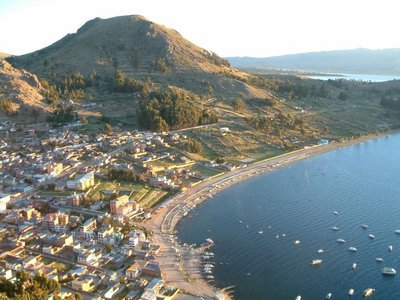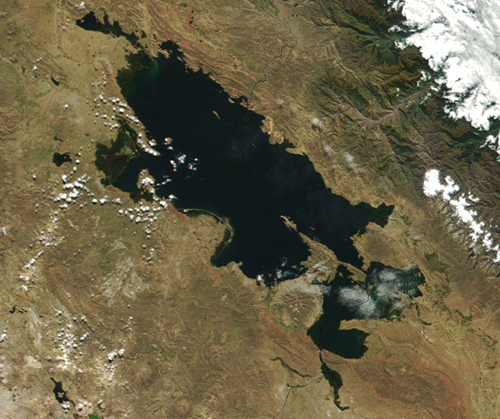Climate
According to the Köppen Climate rating, Lake Titicaca is part of the Highland Climate group. This climate is found in high altitudes, generally in mountain ranges. The lake area can also be classified as Dry-Subtropical Semi-Arid due to the wet and dry seasons that occur in the area. Rainfall is rare due to the lake's proximity to the ITCZ (Intertropical Convergence Zone) as well as its distance from the ocean.
Geological & Topographic Relationship
Lake Titicaca is located high in Andes Mountains (3,812 m above sea level), on the Altiplano plateau, between the Cordillera Oriental and Cordillera Occidental, two mountain ranges that surround the plataeu and lake.
Much of the topography in the area is stratified into terraces, created by the indigenous peoples and their ancestors, the Incas. Like many mountainous lakes, Lake Titicaca is fed by rainfall and glacial melt-off. Even with these water sources, the lake's levels do not remain consistent. Despite it's limited source water, the lake is considered the largest commercially navigable lake for its altitude and one of the largest freshwater lakes in South America. (Newell)
Human Settlement

Image taken from http://wikitravel.org
Most of the lands around shore are inhabited by indigenous peoples such as the Uros, Quechua and Aymara, as well as Bolivian and Peruvian citizens on local towns and cities. Some agriculture, mainly potatoes, barley and quinoa (cereal crop) is present despite arid and low oxygen conditions.
There are modern cities such as Copacabana, Bolivia and Puno, Peru. Most of the area cities thrive off tourism and local agriculture. The area is not densely populated in part because of the limited resources and the high altitude.
Aside from the terrace farms that are maintained by the indigenous people, there are many ruins in and around the lake left by the Inca Empire that provide evidence for early human settlement of the area and early development of the landscape.
|

